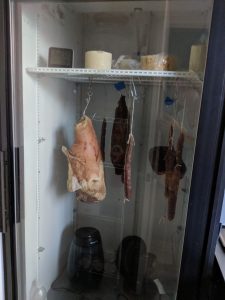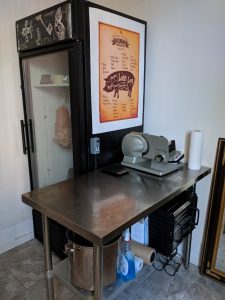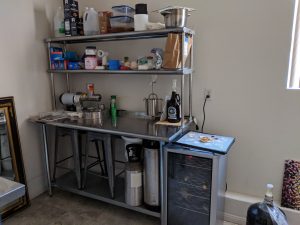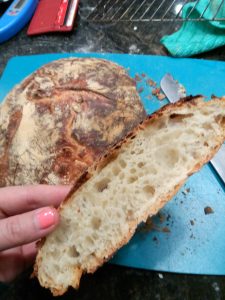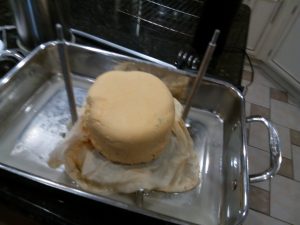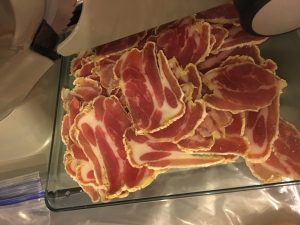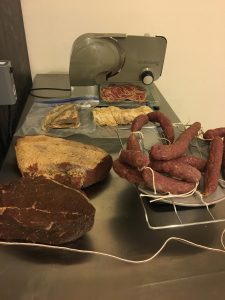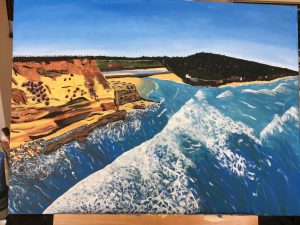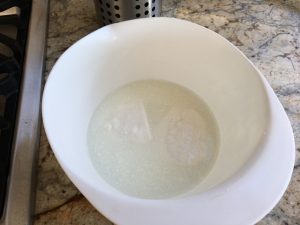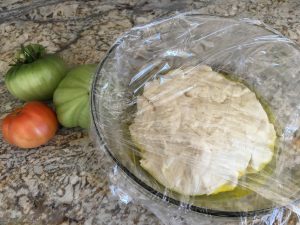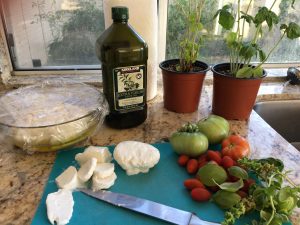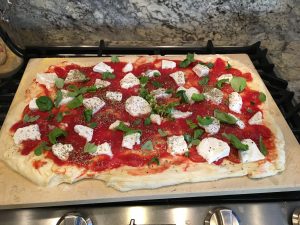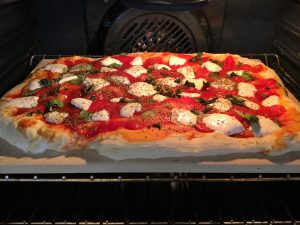My first batch of Salami was thrown out in September-November, suffering from case hardening. It was a very sad thing, and a lesson that you need the right tools and conditions for the job. The little wine fridge, spray bottle, and bowl of salty water to keep the humidity up was not sufficient.
December I started a new Salami…and notably changed processes with an upgrade from a kitchen aid attachment to a serious Weston Butcher Series #12. My full drying chamber/fridge with temp humidity control was already broken in with some whole muscle cures and cheeses, so I was ready for this to go smoothly.
Except, there are always curve balls:
(1)the pH test strips I ordered for measuring the salami fermentation processes were the wrong pH range
(2) my humidifier broke down at the most critical stage of fermentation where you need to maintain 80-90%+ humidity
(3) we had surprising swing in temperatures down to 50-60Fs. Prior and right after fermentation were well into high 70s, ideal temperature for fermentation step
Facing these challenges this Amazombie actually went out to the store to purchase a new humidifier and space heater. I frantically sprayed my salami with water and mold 600, made a closet chamber with contractor bags, set up space heater/humidifier, killed a humidity sensor, and after a few days of constant babysitting and bad salami dreams, I transferred to the 55F/80% humidity chamber for drying. The new pH strips hadn’t come in the mail so took a judgement call that fermentation was probably done. Then to wait 4 weeks and have more salami bad dreams…
The Salami turned out great and I look forward to doing another or a Soppressata next. That was the most harrowing adventure I’ve experienced, perhaps an unusually moldy cheese might be my next one. In the last 6mo though I’ve enjoyed about a dozen or two projects that have been relatively stress free, fun, and delicious.
I should post more because several projects have started and finished including more spalla, more bresaola, more lonza, 15+mo prosciutto, duck prosciutto, 5+ cheeses, pickling, regular bacon and canadian bacon, polish and levain breads. Some pictures to add some color to the recent projects. My locust tree will have ripe fruit for a jam in a few weeks and I just ordered 60 grape vines for planting a backyard vinyard in March.

Cured bacon on Traegar for smoking. I don’t have the smoker attachment so this is placed on a pan of ice to keep temp lower

Bacon wrapped jalepeno poppers and pineapple was a HUGE hit for superbowl party
Superbowl spread; Pancetta, spalla, lonza, salami, bressaola, duck proscuitto, dried apples, picked vegetables
Levain bread without pitched yeast, delicious flavors, airy pockets
Chive farmhouse cheddar pressing
I will try to post more and with specific recipes/walkthroughs. I am only 6mo in and still learning, but hope to pass on some lessons and tips to the internet wanderer.

